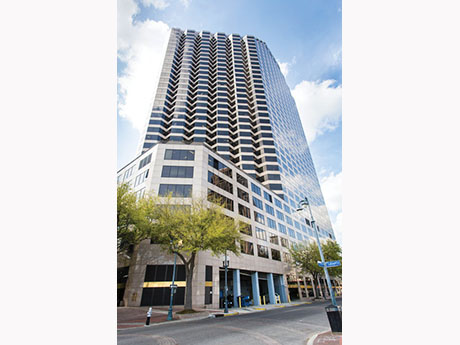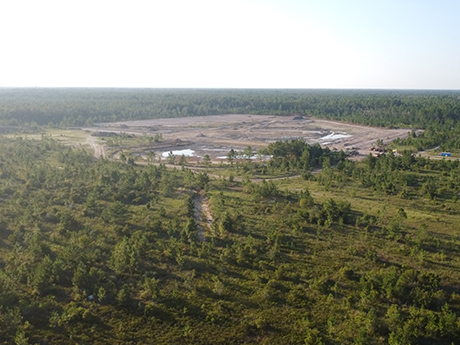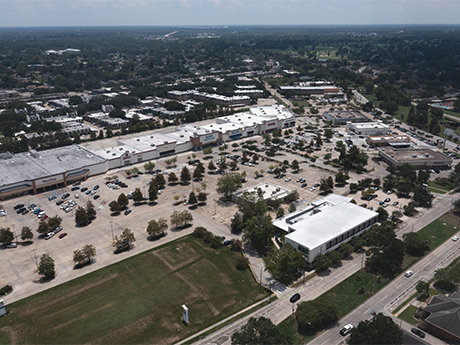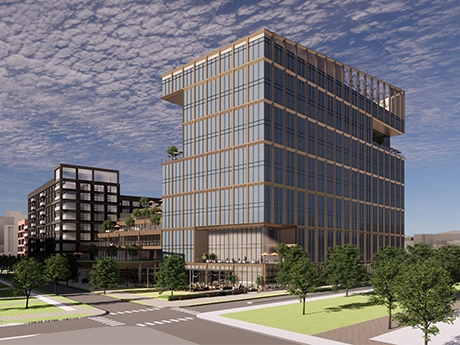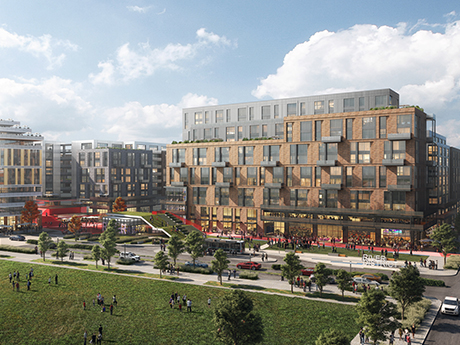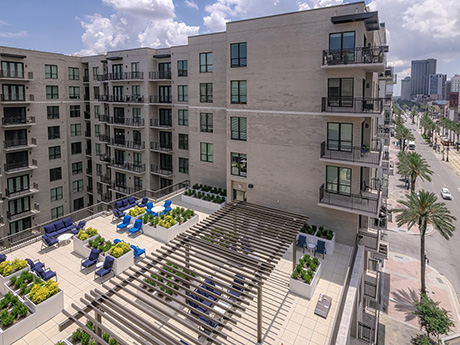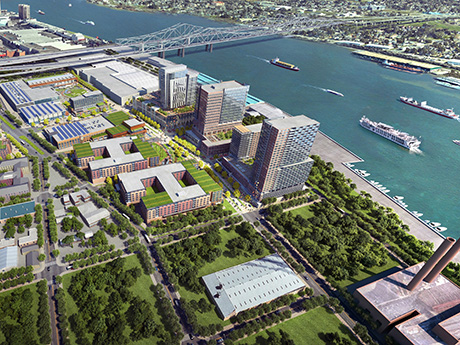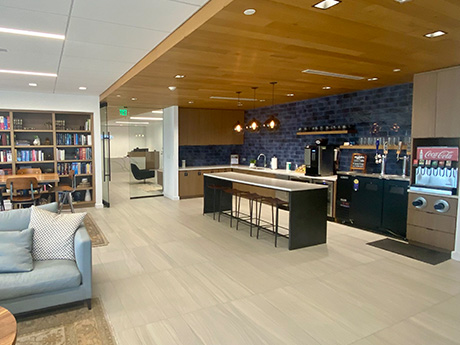In our state of the market overview article in Southeast Real Estate Business October 2023, we defined three challenges in the metro New Orleans multifamily market. These are interest rates, inflation and insurance — or as we dubbed them “the three I’s.” Not to be redundant; however, a year later these elements are still very much factors in the current market and continue to define how multifamily assets are acquired, sold, financed and developed. There is, however, reason for optimism as each of these defining elements has diminished, albeit not completely, from where they were 12 months ago. Interest rates — On Sept. 18, the Federal Reserve reduced short-term rates by 50 basis points — the first reduction in four years. More importantly was the decline in the rate of the 10-year Treasury yield, which is what most multifamily loans are priced from. As of this writing, the 10-year Treasury yield was at 3.76 percent, the lowest it has been in the past 16 months. A further reason for optimism is the fact that the Fed has indicated the potential for four rate cuts next year. There is also the anticipation of further clarity in the capital markets once the …
Market Reports
Despite healthy local market dynamics, the greater New Orleans industrial market did not perform as strongly as insiders expected it to perform over the past 12 months, which is indicative of wider economic factors suppressing a market with pent-up demand. The Port of New Orleans and its access to major shipping routes along the Mississippi River has long been the principal component for industrial real estate in the area. The recent 2024 regular session of the Louisiana Legislature committed $230.5 million to Port of New Orleans infrastructure projects, including allocations to the Louisiana International Terminal, a $1.8 billion project in Violet, La., scheduled to be operational in 2028, which will be the Gulf South’s premier container shipping gateway able to accommodate New Panamax- and Post New Panamax-sized vessels. A bit further up the Mississippi River but still in the greater New Orleans region, Canadian company Woodland Biofuels announced a $1.35 billion investment at the Port of South Louisiana in Reserve, La., to establish the largest renewable natural gas plant in the world. The facility will take waste wood and sugar cane and turn it into natural gas. The process will be carbon-negative, leaving less carbon in the atmosphere than before …
A combination of short sales, declining occupancy rates, loan concerns and migration to suburban offices contribute to uncertainty in the New Orleans office market. As we approach the fourth quarter of this year and begin to reflect back on the market in 2024, the challenges unfortunately outweigh the opportunities. Two notable cases include The DXC Technology Center and The Energy Centre. The DXC Technology Center, located at 1615 Poydras St. in the Central Business District (CBD), a once-prized office tower anchored by Freeport McMoRan, sold for less than $37 per square foot. The building, over 500,000 square feet, traded for $18.5 million, significantly below the remaining debt on the property. The New Orleans Police Department recently signed a lease to occupy approximately 45,000 square feet in the building, which lessens the steep decline in the building’s value. The Energy Centre, located at 1100 Poydras St., is one of the most desirable and best-performing Class A towers in the CBD. It entered receivership, but the building is back on track and is rumored to be nearing a sale. The building owner, The Hertz Group, controls four additional Class A office towers on Poydras St. (400, 650, 701 & 909 Poydras St.), …
For the past decade, the inventory of industrial space in the Greater New Orleans market has not been large enough to meet demand. Comprising mostly older product that would be considered Class B or C in more populous markets, New Orleans-area warehouses have an overall vacancy rate of less than 2 percent. The demand has resulted in rising rental rates. Development of new product is warranted, but a combination of factors has prevented new projects from being built. Finally, in 2023, despite increased construction costs, high insurance costs and rising interest rates, projects are underway that will accommodate the demand in a market that is long overdue for new, modern warehouse product. Despite having all the ingredients to be a major industrial market, including one of the country’s largest port systems, warehouse infrastructure in New Orleans is dated, mostly due to a lack of suitable land for development. Institutional ownership and investment here is limited to select groups that, while chasing higher yields, took the time to learn the market’s dynamics and build local relationships. Historically, as brokers and tenants bemoaned a lack of product, national developers were reluctant to deploy capital to speculate in an unfamiliar and unproven locale. …
The New Orleans retail market is in a state of flux like other markets across the country. The retail experience is changing for the end user, with an increase in online shopping, “try before you buy” customers and quicker walkthroughs. Retailers are left in an odd position, caught between experiential interactions with customers and trying to have them remember to purchase later at home. While the retail market is changing, the Greater New Orleans area is different due to the scarcity of space available for new construction and a stable flow of stores closing or relocating. Our market creates a streamlined experience where consumers have “retail corners” they can visit to shop — such as downtown New Orleans, especially the iconic streets of Canal and Magazine — but also the suburbs that include Metairie, Elmwood and the Westbank. With the concentrated shopping setup of the market, customers can shop more efficiently, and retail investors see the New Orleans market as a more demanding and creative place to build and open stores. Submarket by submarket The retail customer in New Orleans detests spending unneeded time in the car, so when customers can shop locally, get what they need and get it …
Shell’s announcement in mid-September to relocate its home from the Central Business District (CBD) of New Orleans to the planned 50-plus acre River District rocked the office market. The oil and gas giant has been in the Hancock Whitney Center (formerly One Shell Square) since 1972, and will be rightsizing in a Class A mid-rise office building that will anchor the River District. The planned building will be approximately 142,000 square feet and home to 850 to 1,000 employees. What a huge win for the planned River District and city of New Orleans. However, the void left in Hancock Whitney Center raises the question, what will building ownership group do with all of the space that Shell vacates? If the current occupancy rate stands, Hancock Whitney Center will have over 500,000 square feet of vacant space. Elsewhere, Entergy is in the process of a major contraction in its building located at 639 Loyola Ave., and earlier this year, Freeport McMoRan vacated over 100,000 square feet of space at 1615 Poydras. Both buildings are also located in the CBD. A number of office towers have loans maturing within the next 24 months, and the logical assumption is that securing financing will …
The volatility in the capital markets over the past 12 to 18 months has wreaked havoc on many aspects of the economy, and real estate has not gone unscathed. Unlike the retail and office sectors whereby there is a fundamental shift in how people work and shop, housing is a basic need. The equilibrium between supply and demand in metro New Orleans’ multifamily market is still in sync. It would however be naïve to suggest there are no challenges that are affecting our real estate market. The “three dreaded Is” (i.e. inflation, interest rates, insurance) is not a Halloween mask but a euphemism that crystallizes the challenges multifamily owners are faced with both locally and nationally. Each of these factors singularly are powerful forces, yet the trifecta is playing a role in the current state of our metro market. However, despite these challenges, the regional multifamily market has stable occupancy with most submarkets reporting levels in the 92 to 94 percent range. Overall monthly rental rates average $1,263 with rents ranging from a low of $1,000 in Eastern New Orleans and Algiers to rents in the Downtown market as high as $3,000. Once again, the barriers to entry (lack of …
Increased interest rates and challenging insurance costs would normally stifle a multifamily market. However, an inventory constrained by a lack of land, supply chain issues, labor shortages and the increased cost of homeownership have contributed to a further stabilization of the metro New Orleans multifamily market. The overall vacancy factor for our seven primary submarkets that make up metro New Orleans are in the 5 to 6 percent range. We anticipate occupancy rates to steadily increase going forward as new construction has stalled and rising interest rates have delayed many tenants from transitioning to homeownership. Overall rental rates in the metro average in the $1,250 to $1,350 per month range. The rents represent a 3.5 percent increase over the past 12 months. It should be noted that some submarkets have seen considerably higher increases. The highest rental rates reported in the metro for garden-style communities are in Eastern St. Tammany Parish, where the newest inventory exists. The highest rents in New Orleans are downtown in the CBD/Warehouse District. These communities comprise mid-rise and high-rise developments and command rents exceeding $2.50 per square foot. The downtown market experienced some softness during the COVID-19 pandemic but made a robust recovery once restrictions …
New Orleans has seen significant, pent-up retail growth over the past 12 months as we emerge from the COVID-19 pandemic. More recently, however, external forces have provided some headwinds and caused tenants and investors to go back to their corners to reassess. Inflation, rising interest rates, insurance premium increases and elevated construction costs have all contributed to uncertainty in the Greater New Orleans retail landscape. Within the French Quarter and CBD, growing concerns from crime have forced some CEOs to look outside of the city core for their office headquarters. This issue, coupled with the current “work-from-home” environment, causes downtown retailers to rely even more on tourism and convention business. Thankfully, the hospitality sector has had success and is now exceeding pre-pandemic levels. Due to an active 2021 hurricane season that saw Hurricane Ida devastate South Louisiana, insurance rates have skyrocketed as carriers continue to leave the state. As a result, landlords have struggled with how to handle these unforeseen spikes in expenses. Should they pass those on to the tenant or eat them to remain competitive, or a combination of the two? 2022 has been a surprisingly quiet storm season, so with any luck these rates should begin to …
In the post-pandemic environment where employers are trying to navigate new work schedules, office tenants are focusing more on the finish and design of office space than they are the rents. In New Orleans, we are seeing office tenants rethink the concept of office space altogether, and their employees are thinking differently about their individual offices as well. There has been a shift from the traditional office space of years past where one spends eight hours a day in a large private office with the door closed. The office has evolved into more of a social place. Companies want their employees to come back to the office and not to be fully remote. Many employees want to get out of their pajamas and come back to the office. But, getting them all to come back has proven to be the challenge. Companies are now enticing their employees with redesigned spaces that are more aesthetically pleasing and rich with amenities that allow for more social interactions and collaboration. Employees who work remotely a few days a week are coming to the office because they want that engagement with their colleagues. Tenants are now less interested in refurbishing private offices and spend …
Newer Posts



